Pet Supplies

Collar-Activated Cat Bowls: Benefits and Featur...
Collar-activated cat bowls contain a sensor that picks up on the cat’s collar. This lets the bowl unlock food or water for the right pet only. They prevent food-sharing, which...
Collar-Activated Cat Bowls: Benefits and Featur...
Collar-activated cat bowls contain a sensor that picks up on the cat’s collar. This lets the bowl unlock food or water for the right pet only. They prevent food-sharing, which is useful for multi-cat households with one or more cats on special diets or with allergies. In Australia, where multi-pet homes are the norm, this tech can prevent greedy pets from stealing meals. Vets say these bowls assist with weight control and can reduce anxiety in cats that guard food.
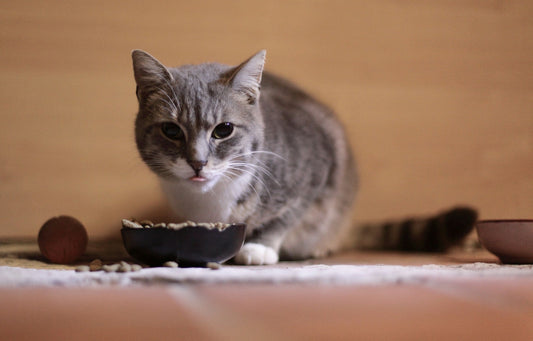
Orthopedic Cat Bowl - Elevated Anti-Vomiting De...
When selecting an orthopaedic cat bowl, pay attention to the bowl's height, angle and material. Ensure they’re right for your cat and Australian standard! Elevated bowls can assist with neck/joint...
Orthopedic Cat Bowl - Elevated Anti-Vomiting De...
When selecting an orthopaedic cat bowl, pay attention to the bowl's height, angle and material. Ensure they’re right for your cat and Australian standard! Elevated bowls can assist with neck/joint pain, making mealtimes less difficult for cats (particularly older ones). Shallow, wide bowls are good for whisker stress, which is prevalent in many of the breeds here. Stainless steel and ceramic are your best bets for effortless cleaning and safety. Keep clear of plastic, it can crack and hide germs!
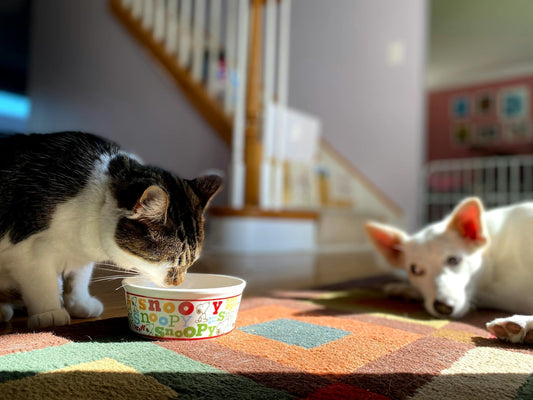
Are Slow Feeding Bowls Safe for Cats? - A Compr...
Key Takeaways Are slow feeding bowls safe for Aussie cats? Just ensure they’re constructed from sturdier and non-toxic materials such as stainless steel or BPA-free silicone. These bowls promote slow...
Are Slow Feeding Bowls Safe for Cats? - A Compr...
Key Takeaways Are slow feeding bowls safe for Aussie cats? Just ensure they’re constructed from sturdier and non-toxic materials such as stainless steel or BPA-free silicone. These bowls promote slow eating. This decreases the chances of us having to deal with vomiting, digestive upset, and obesity in our kitties. Slow feeders are great for mental stimulation, particularly in indoor cats, supporting physical and mental health. Not all cats take to slow feeders, though. Watch your cat’s behaviour and test out different styles if necessary. Go with a slow feeder that fits your cat’s eating style and food type. Ensure that it’s easy to clean for hygiene! “Always, always check with your local vet before trying a new feeding method.” This is particularly the case if your cat has any health issues or special requirements. These bowls slow feeding down, which may reduce the chance of vomiting and bloating in most healthy cats. In Australia, many vets approve of slow feeders for indoor cats that gobble their food or require weight management. It’s essential to pick a bowl that’s the right size for your cat and their age. Stainless steel and ceramic bowls shine through as the better options. They are easy to clean and less allergenic. Some cats can be picky about new bowls, so monitoring their eating is important. The next highlights the pros and cons before making the switch. What's a Slow Feeder Bowl? A slow feeder bowl is a pet dish designed to slow down a cat’s eating speed. Unlike normal bowls, slow feeders feature raised ridges, swirling patterns or maze-like shapes. These create barriers that force a cat to work a little harder to get to their food. Because at its heart is the desire to help dogs eat more healthily and digest better. Understanding Slow Cat Feeders Slow cat feeders solve the issue of rapid eating, which is prevalent in many Aussie homes. If a cat eats too fast, they can regurgitate their food. Slower eating reduces vomiting and keeps digestion on track,” says Dr. Sarah Goldsmith, a Melbourne-based feline vet. Puzzle designs in slow feeders do more than just slow down eating. They offer cats a little brain workout, too, making mealtimes more stimulating! This additional challenge aids portion control, which is essential for cats that are prone to being overweight. Not all cats are equal, however. Some appreciate the challenge, whereas other dogs might get frustrated and leave. Most bowls vary in terms of shape, size, and material to cater for cats’ personal tastes. How They Differ From Normal Bowls It’s all in the design. Normal bowls are generally flat and open, while slow feeders shatter the surface with obstacles. These make sure food stays inside the bowl, not outside it. They’re great even for paw-happy cats! Made from materials like BPA-free plastic, stainless steel or ceramic, they’re ideal for allergy-prone cats or those with sensitive whiskers. The Goal: Slower, Healthier Eating The goal is simple – assist kitties to eat at a more secure speed. Eating slower helps with digestion, reduces vomiting, and gives owners greater control over portion sizes. This is why slow feeder bowls are a good option to help control weight and promote health. Why Do Cats Eat So Fast? Aussie cat owners often observe their lovely felines ‘gobble’ down meals in record time, which isn’t just a quirky habit! This behavior is influenced by instinct, environment, and health. Understanding these eating habits highlights the benefits of using slow feed cat bowls, which can help promote a healthier pace for cats today. Instincts from Their Wild Ancestors Cats are descended from wild hunters that needed to eat fast - or risk losing what they’d caught. When it comes to hunting in the wild, food is hard to come by, and a leisurely dinner could see that meal taken by another animal. That instinct might stay with house cats, even if their bowl is never empty. Dr. Sarah Ellis, a behavioural expert, notes this interesting fact: many household cats still show bursts of predatory energy. Their fast eating is a hangover from their feral ancestors! Even indoor cats can gorge, as the survival instinct kicks in. Competition with Other Pets In multi-cat - or dog - households, mealtime is like a race. Cats could be encouraged to eat fast out of a sense of competition, even if there is enough food. Separate feeding spots or staggered meal times can help reduce the anxiety and slow things down. Multi-pet households tend to experience increased post-meal vomiting as cats wolf down food to not lose out. Underlying Health or Hunger Issues Eating quickly can be a sign of health problems too. Hyperthyroid conditions or diabetes make cats hungrier, hence their fast eating. Habits of eating (and speed of eating) can be altered for many reasons, a significant one being anxiety or stress. Monitor your cat’s eating behaviour,” advises local vet Dr Lisa Chimes. If something changes, consult your vet! Boredom or Lack of Stimulation Boredom or no mental stimulation can cause cats to regard mealtimes as their primary excitement. Fast eating could mean your cat is bored. Puzzle feeders or food-dispensing toys provide kitties with a task and decelerate the action. Because I have a habit of switching up feeding schedules to make meals exciting! Just Plain Love of Tucker! So some cats are just chow hounds. Excitement over a beloved flavour or morsel can send them into a eating frenzy. It’s beautiful to see a cat with their food! Moderation is key – see if slow feeding bowls or treats fed by hand help to keep them healthy. Slow Feeder Safety: The Lowdown Cat slow feeders, particularly the slow feed cat bowls, are becoming more common in Australia. This is especially the case for owners that notice their fast eater cats wolfing down their food. Although a slow feeder dish aids in digestion and provides mental stimulation, safety is paramount. Let’s run through the key safety bullet points and highlight what to consider when selecting a slow cat feeder. 1. Bowl Materials: What's Safe, Mate? Safety of materials is crucial. Food-grade silicone, ceramic and stainless steel slow feeders are the best options. They’re easy to clean and don’t scratch as easily. Plastic bowls can be dangerous – cheaper types may scratch, allowing bacteria to gather, and can leach chemicals such as BPA. Choose BPA-free and certified pet-safe materials to minimise risks,” advises Dr Brooke Schampers, a Queensland vet. Be sure to look for markings or certification that shows the bowl’s safe. 2. Potential Choking and Tooth Worries Some slow feeders have deep grooves or crevices. These can catch kibble, increasing the risk of choking or dental damage. Observe your cat while it eats and make sure food isn’t getting stuck. Choose feeders with smooth wave patterns and wide gaps. ‘Request regular dental checks from your vet, especially if you start to notice changes in chewing,’ she adds. 3. Cat Frustration: A Real Issue? Not all cats enjoy puzzles at mealtimes. Frustration signals – such as aggression or neglecting the food – indicate the feeder may be too well concealed. One Sydney-based behaviourist, Dr Kim Kendall, recommends beginning with basic designs for fussy or elderly cats. 4. When Are They a Bad Idea? Slow feeders aren’t suitable for all cats, though. Flat bowls are best for dental pain, arthritis or extreme anxiety, you’ll be better off. Personalised food puzzles can make mealtimes more enjoyable. If your cat isn’t able to adjust, consider offering smaller, more frequent meals. 5. Chat to Your Aussie Vet First Always check with your vet first. Vets can advise on the suitability of slow feeders based on your cat’s age, health, and eating patterns. If your cat is eating less or eating more, tell your vet! More Than Just Slow Eating Slow feeder bowls are more than just a way to slow your cat down. For a number of Aussie pet owners, these feeders are just one aspect of a holistic approach to cat care. Slow feeders do more than simply prevent greedy eating. The right one nurtures your cat body and mind, reinforcing well-being for life and promoting better practices in the home. Better Digestion for Your Furry Friend Furthermore, cats that eat too fast often swallow air, which can cause bloating and discomfort. Slow feeders assist by delaying meals which support digestion and nutrient absorption. Vets around Australia have noticed an interesting trend. Steady eaters are less prone to upset tummies, diarrhoea or constipation. Monitor your cat’s litter box after you switch to a slow feeder. These alterations can signal early signs of better gut health! Helping with Weight Management Over half the cats presented in Australian clinics are overweight or obese. The proper portion control is crucial for cat obesity prevention,” states Dr Kate Mornay, a Sydney-based vet. Slow feeders prolong every meal, encouraging the appetite and reducing overindulgence. These bowls make it easier to follow recommended portions, meaning weight loss occurs gradually and safely. Mental Workout for Your Cat There’s a really strong instinct to hunt and forage in cats. Puzzle-style slow feeders challenge them mentally, interrupting the repetition of being indoors and relieving boredom. Rotating feeder types keeps meals interesting and fun, promoting wellness beyond physical health. Reducing Vomiting and Regurgitation Fast eating usually involves eating (and vomiting/regurgitating) soon afterwards. Eating more slowly, as promoted by slow feeders, can avert this. Less messes and a happier, more comfortable cat will be waiting. Any Downsides to Slow Feeders? Although slow feed cat bowls provide genuine advantages for numerous Australian cats, they are not a solution that fits all. Some cats enjoy the challenge of a slow feeder dish, while others may find it too challenging or not interesting. So what are the main downsides, and how might they impact your feline at home? Not All Cats Take to Them Some cats simply aren’t keen on slow feeders. They may just turn their noses up at the bowl or become frustrated, particularly if they’re accustomed to ordinary dishes. Food-driven or anxious cats can get frustrated, making mealtime stressful. Some cats get obsessed with retrieving the food. This can create mess or even become aggressive,” says Dr Kate Mornay, a Sydney-based kitty vet. You need to see your cat’s reaction. Experiment with other shapes or patterns to see what your cat likes. Patience and careful attention make the transition a lot easier. Some Designs Are a Pain to Clean Some slow feeders have multiple grooves, nooks or tight corners. They can catch food and make for difficult cleaning. If it is not cleaned properly, bacteria can build up. This can endanger your cat’s health, particularly in hot, humid environments such as Queensland. Opt for smooth, dishwasher safe bowls to save time and keep things hygienic. Frequent cleaning is essential – plastic can breed bacteria, so many vets recommend ceramic or steel. Can Be Messy with Wet Food Wet food in slow feeders can be a messy affair. Certain designs don’t contain spills very well, resulting in sticky patchy messes on your kitchen floor. For cats with wet diets, select slow feeders made for liquids or softer food. These typically have fewer ridges and deeper sides. Cleaning up after every meal prevents smells and deters bugs. Pick the Perfect Slow Feeder Choosing the ideal slow feed cat bowl for your kitty involves more than just looks; it must align with your cat's eating habits, type of pet food, and personality. An appropriately sized slow feeder dish helps prevent issues like regurgitation, promoting better digestion while providing a slight mental challenge. Let’s delve into the specifics of selecting the best option. Consider Your Cat's Personality Cats vary in their reaction to slow feeders. A nosy or mischievous cat might go for puzzle bowls, treating them as a game. For the more timid or nervous of felines, a less fussy design can ease mealtime stress. It’s best to observe your cat to see how they respond with different feeder styles,” says Dr D'Amato. This’ll help you select one that keeps them occupied without causing annoyance. Matching enrichment to a cat’s specific personality is key, says Dr. Kate Mornement, a leading animal behaviourist. This method increases a cat’s interest and decreases the chances of feeding problems. Match Bowl to Food Type Not all slow feeders suit all food. Bowls with deep grooves are well-suited to dry kibble, whereas wider, shallower patterns are better for wet food. Wet food can often seize up in corners, meaning feeding time can be far messier and less fun! For mixed diets, some bowls provide inserts or removable barriers to make them more versatile. Take the food and the feeder’s size and shape into account. Easy Cleaning is Key It needs to be easy to clean in order to avoid bacteria build-up. Dishwasher-safe stainless steel and BPA-free plastic make your life easier too. Avoid feeders with deep crevices, as crumbs can become lodged. Occasional cleaning with a weak bleach solution keeps it safe and healthy for your pet. Check for Sturdy, Safe Design The stability stops tipping and mess. Seek out feeders with a weighted base or non-slip bottom. Materials should be non-toxic and tough enough to withstand daily use. Durability counts, particularly for bigger or determined cats. A few feeders even allow you to programme several small meals a day, for added convenience. Conclusion Slow feeder bowls are a great option to give cats a fighting chance at mealtimes. These bowls prevent gulping, lower the risk of choking and make dinner time just that little bit more fun. In most Aussie homes, cats use them without issue. Some may take a moment to learn the new trick, but the majority catch on very quickly. Good bowls demonstrate durable construction, safe materials, and easy cleaning. Keep an eye on your cat at first, but the majority adapt readily. A slow feeder works for all cats, from city apartments to country houses. Eager to aid your cat in slowing down or to keep them occupied? Try a slow feeder and see the difference for yourself. Your cat’s wellbeing is important! Frequently Asked Questions Are slow feeder bowls safe for cats in Australia? Yes, slow feed cat bowls are safe for most felines, as they are crafted from pet-safe materials and help minimize the risk of choking and vomiting. Can any cat use a slow feeder bowl? The majority of cats today can benefit from slow feed cat bowls, while flat-faced cats or special needs felines may require a different style. Do slow feeder bowls help with hairballs? Can slow feed cat bowls reduce hairballs? A slow cat feeder promotes slower eating, leading to less air ingested and reduced regurgitation! How do I clean a slow feeder bowl? Most slow feed cat bowls in Australia are dishwasher-safe, while others can simply be washed in warm soapy water. Can kittens use slow feeder bowls? Are slow feed cat bowls safe for kittens? Simply select a slow feeder dish with a small-mouth-appropriate design. Will a slow feeder bowl stop my cat from overeating? Slow feed cat bowls can help slow down eating habits but won’t prevent overeating altogether; portion control is still required. Are plastic slow feeder bowls safe for cats? Plastic slow feed cat bowls are safe if they’re BPA-free and of good quality, while ceramic or stainless steel slow feeder dishes might be best for plastic-sensitive cats.
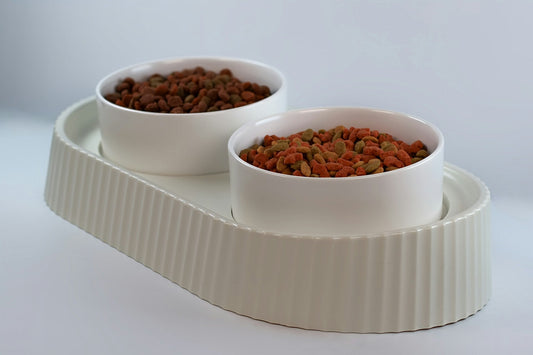
The Health Benefits of Elevated Cat Bowls - Wha...
Elevated cat bowls mean that cats can eat and drink in a more natural, relaxed fashion. They keep Aussie homes cleaner! Elevated bowls are higher off the ground. This design encourages...
The Health Benefits of Elevated Cat Bowls - Wha...
Elevated cat bowls mean that cats can eat and drink in a more natural, relaxed fashion. They keep Aussie homes cleaner! Elevated bowls are higher off the ground. This design encourages senior kitties or those with joint pain to not crouch as low. It’s better for comfort and can ease mealtimes on their neck and back!
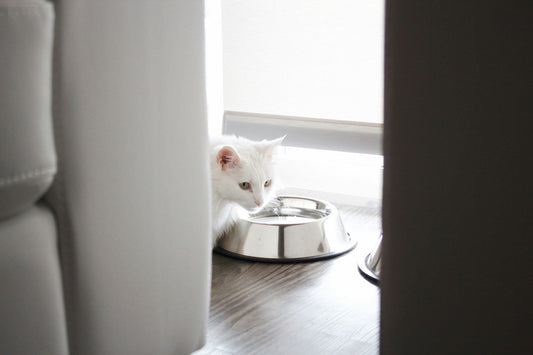
Essential Materials for Building a Feral Cat Fe...
What materials are used in cat feeding stations? In Australia, these are likely to include stainless steel bowls, non-slip mats, raised surfaces and easy-to-clean trays. Stainless steel remains rust-free and safe...
Essential Materials for Building a Feral Cat Fe...
What materials are used in cat feeding stations? In Australia, these are likely to include stainless steel bowls, non-slip mats, raised surfaces and easy-to-clean trays. Stainless steel remains rust-free and safe for cats, while ceramic is excellent at keeping water cool. With raised feeders, use bamboo or recycled timber wherever possible. These materials not only resist the local weather, but beautify their homes.

Automatic Cat Feeders for Wet and Dry Food
Smart automatic wet & dry cat feeding systems allow Aussie pet owners to feed their cat with more convenience and minimal hassle. These systems allow you to provide wet and...
Automatic Cat Feeders for Wet and Dry Food
Smart automatic wet & dry cat feeding systems allow Aussie pet owners to feed their cat with more convenience and minimal hassle. These systems allow you to provide wet and dry food at predetermined times, preventing missed meals or excessive feeding. Most of the units run on local mains power with a back-up battery – ideal for homes from Sydenham to the bush. Many models are compatible with mobile applications for remote modifications, convenient for those with extended workdays or unexpected journeys.
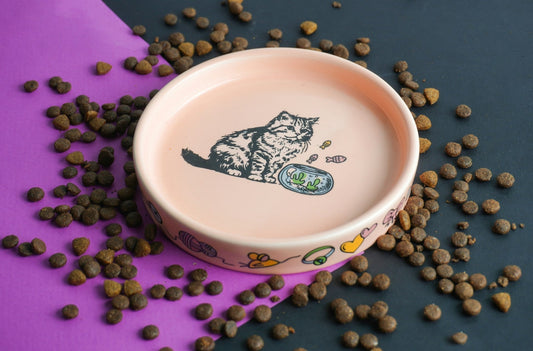
Strategies to Dog Proof Cat Food Bowls and Keep...
Dog-proof cat food bowls feature a unique design to prevent dogs from eating your cat’s dinner. In many Aussie homes where cats and dogs share space, dogs often eat cat...
Strategies to Dog Proof Cat Food Bowls and Keep...
Dog-proof cat food bowls feature a unique design to prevent dogs from eating your cat’s dinner. In many Aussie homes where cats and dogs share space, dogs often eat cat food, causing worry about health and diet balance. Bowls that have locking lids, weighted bases or raised stands prevent dogs from making sneaky speed-eating moves. Microchip sensors help provide an additional level of protection.
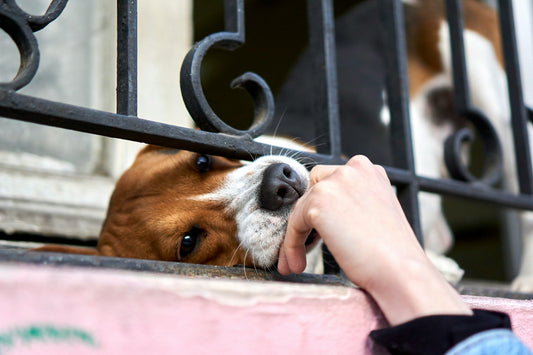
3 Bowl Pet Feeder for Cats and Small Dogs | Ele...
A 3 bowl pet feeder for small dogs means you can feed your pet with less mess and more ease. These feeders are super convenient! They enable me to offer...
3 Bowl Pet Feeder for Cats and Small Dogs | Ele...
A 3 bowl pet feeder for small dogs means you can feed your pet with less mess and more ease. These feeders are super convenient! They enable me to offer dry, wet, or raw food at the same time, water, and treats side by side, no hassle. For small dogs, portion control is important, so each bowl is perfect for one day of feeding while minimizing mess. All models have the option of stainless steel or BPA-free plastic and take up a small footprint. Bowls generally accommodate 1 to 1.5 cups (250–350 ml), which is perfect for small breeds.
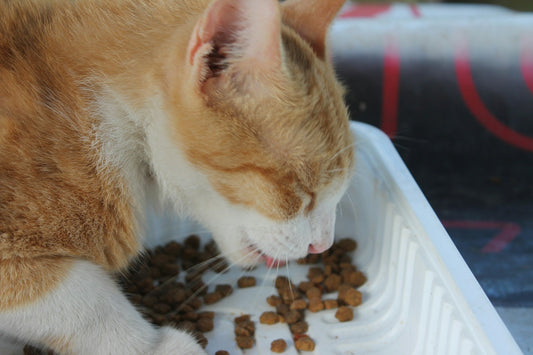
The Best Slow Feeders for Cats to Manage Eating...
The best cat feeder to slow down my cat’s eating. It slows her down so she doesn’t eat so quickly that she gets sick. Now that she uses a slow...
The Best Slow Feeders for Cats to Manage Eating...
The best cat feeder to slow down my cat’s eating. It slows her down so she doesn’t eat so quickly that she gets sick. Now that she uses a slow feeder, my cat eats at a much more even rate. She is much more happy with her meals and gets much fuller longer! Raised ridges or maze-like formations on their feeders prevent gulping and extend meal times, keeping cats engaged. For cats that chow down, these feeders result in decreased vomiting and improved digestive health. The result, for me, is cleaner floors—and less stress at meal time.
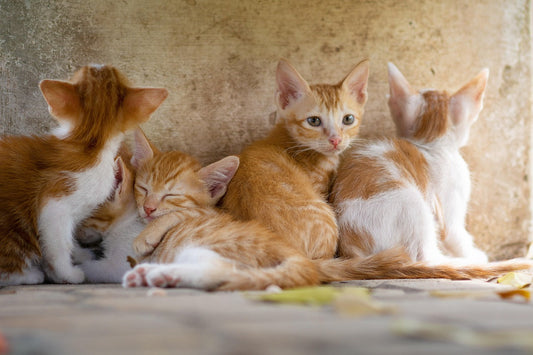
Healthy Pet Simply Feed Automatic Feeder for Mu...
Key Takeaways Consider automatic feeders to make mealtimes easier for your multi-cat household. This will ensure less stressful food fights and a more peaceful daily routine. To promote equitable food...
Healthy Pet Simply Feed Automatic Feeder for Mu...
Key Takeaways Consider automatic feeders to make mealtimes easier for your multi-cat household. This will ensure less stressful food fights and a more peaceful daily routine. To promote equitable food distribution and provide a variety of dietary needs, choose automatic feeders equipped with programmable portion controls and multiple compartments. Reduce mealtime bullying and promote peaceful eating habits by using smart feeder placement and access control functions. Maintain hygiene and cat safety by choosing easy-clean feeder designs made from pet-safe materials, and establishing a consistent cleaning schedule. Use intelligent technology to track your feeding routine do notices. Take advantage of automated schedules and remote feeding options for ultimate convenience. Prevent common feeder malfunctions by regularly inspecting, cleaning, and monitoring your automatic dispensers to guarantee reliable operation for your cats. An automatic cat food dispenser for multiple cats turns feeding time into a breeze. It’ll make sure all your kitties are served, in due time, each day. I program each meal time and portion, so each cat receives the proper amount of fresh food without the hassle and fighting. You won’t miss daily scooping and refilling, and your cats will always get their perfect portion. All models can hold several days of dry food. Some even let you set the portion size to match each cat’s meal plan! You can feed cats through a simple gravity feeder or smart automatic dispensers with timers and phone apps. Whether you need to stay on track during hectic days, frequent travel, or simply want to create less mess at home, an automatic pet feeder will make life easier. Here’s how to choose the automatic food dispenser that’s right for you. Why Use Automatic Feeders? When we start discussing feeding multiple cats at once, the conversation gets tricky. Automatic feeders are here to save the day, for you and your cats. Create a positive environment. Configure your environment as best you can to eliminate unnecessary stress. This prevents food fights between cats and makes sure everyone has access to food when they need it. Solve Multi-Cat Mealtime Chaos Automatic feeders bring an end to uneven meal times. Food fights are diminished because each cat has their meal in their own personal space. This way, there’s not as much competition for space. By establishing feeders in clusters, you reduce fighting over feeders between cats who want to defend each and every bowl. Timers allow you to stagger meals, so cats can eat without congregating and eyeballing one another. Feeders that dispense food gradually provide more mental stimulation and enrichment, which can reduce anxiety. This method keeps them from darting to the bowl, making it great for group feeding. Ensure Fair Food Portions I love that I can determine exactly how much food each cat gets so no one goes hungry or overeats. Feeders that feature split trays or compartments make it easy to serve up the appropriate size for each one. It’s simple to monitor how much each cat is consuming and notice when someone’s not eating properly. If one of the cats is more active or needs a special diet, I can tweak the portion for that cat. Reduce Your Feeding Stress By automating feeding, it removes one of the largest tasks from my to-do list. Notifications for upcoming refills ensure that I never run out. With the app or remote, I’m able to alter feeding times regardless of if I’m home or not. I don’t need to surveil him 24/7, leaving me with the assurance that he is safer, even when I’m not watching. Cater to Different Schedules Feeders can be programmed to dispense food at each cat’s specific meal times, ensuring everyone is fed when they need to be fed. I can adapt feeding schedules to my day. Timers ensure the cats don’t skip a meal, even when I’m out of town. Some cats prefer frequent little meals, and I can provide that as well. Essential Feeder Features for Mates Smart features go a long way. When selecting automatic cat food dispensers for homes with multiple cats, look to the features that make feeding easier. Seek out solutions that allow all cats to eat equally. You need a solution that fits into your hectic lifestyle. It needs to keep cats from pilfering one another’s meals and aid in cutting down on waste. Programmable settings and a built-in real time feeding log allow feeders to be remarkably dynamic. What’s more, with their rugged construction, they’re going to last for years and years to come. 1. Control Portions Precisely It’s much simpler to ensure that all cats stay healthy when each one receives the ideal serve. Others, like the Feeder-Robot, dispense 60 ml servings. If you want to adjust the quantity, for example, it is very simple to switch to a 30 ml size. This is especially important when you’ve got cats with competing needs. A comfortable adult cat probably does best on a half cup (120 ml) of food each day. It is possible to save yourself from overfeeding by changing portions. The PETLIBRO allows you to program 1 to 6 meals per day, as small as 12 ml per portion. Convenient built-in slow feed settings help slow down meal times, so everyone eats at a safer pace. 2. Set Flexible Feeding Times Feeders with automatic timers remove the worry and anxiety from meal times. The Feeder-Robot is capable of dispensing up to eight meals a day. This feature will enable you to easily match up with every cat’s feeding schedule. If you want to squeeze in a snack between meals, spur-of-the-moment changes are easy. The PETLIBRO holds up to six feeding times, so you’re set even if your work schedule shifts. 3. Stop Food Theft Tactics Smart options work with microchip readers or RFID tags, so only the cat who needs the food sees the food. Models with dividers or covered trays prevent pesky antics and ensure each kitty’s grub is protected. Handling Different Dietary Needs Feeding multiple cats can be challenging, especially when they all require different diets. Automatic feeders make it a whole lot easier. Some models, such as the Feeder-Robot, hold up to 7.5 litres of dry food. We found this model to work best with smaller kibble. If you experiment with alternative shapes, just use the insert provided to create a swoop that lets us enjoy the flow! With the AIR WiFi feeder, you don’t have to compromise either—you can serve up to 16 small portions at each meal. Each serving is approximately 12 ml. It allows you to calibrate precise serve sizes with the Feeder-Robot, dropping feed down to as little as 30 millilitres per drop. Most feeders are manufactured with double compartments. This lets you serve multiple, separate meals at once. If your cat is on a prescription diet, look for a model that has different compartments for storage. This helps to make sure the special food stays safely separated from regular pet food. The Wopet Automatic Pet Feeder holds up to 3.2 kilograms of dry food, meaning you don’t have to refill as frequently. For moist food, choose a version with airtight compartments to store perishable ingredients properly. Feed Prescription Food Separately Feeders with separation trays prevent food from running together. This makes it easier if one cat requires a specialty diet, such as renal or hypoallergenic food. Brands such as the Feeder-Robot have detachable cleaning trays, allowing you to quickly and easily clean the trays, keeping things neat and hygienic. Through these app-based alerts you can view when your kitty taps that feathery laser pointer, so you’ll know if they’re sticking to their diet. Understanding each cat’s individual needs and remaining committed to their established care plan helps them stay healthy for years to come. Manage Weight Control Diets Many automatic feeders even allow you to program the serving size to the millilitre. This encourages cats not to overfeed, which is important for cats on weight loss programs. Programmable automatic feeders allow you to adjust serving sizes at any point. If your pet has special dietary needs, including issues with weight, speak to your veterinarian about proper nutrition and meal planning. By utilising feeders that send alerts and reports, you’re able to monitor eating habits and adhere to your vet’s recommendations with improved ease and efficiency. Minimise Mealtime Bullying If you feed more than one cat, it can be almost impossible. Another huge barrier is bullies at mealtime. I see plenty of cases where one cat tries to muscle in on another’s food, causing stress and even fights. Using an automatic cat food dispenser with the right features can help smooth things out, making sure each cat gets a fair go. It doesn’t take a cat whisperer to realize that it’s best to create an environment where each kitty can enjoy their meal undisturbed. This not only maintains the peace but protects their health as well. Physical Barriers and Dividers Feeders with internal barriers like these do a great job of making safe food spaces. With solid dividers, each cat has a comfortable, private area where they don’t feel the stress of having to look over their shoulder at the next guest. Installing a fence—such as short wooden boards or transparent plastic dividers—prevents an obnoxious kitty from making off with additional cat-fuls of food. I choose heavy materials that won’t blow away, crashing down on the cats if they get curious. Providing each cat with their own defined area, such as individual mats or rug tiles, reduces stress levels and prevents food trading. Individual Access Control Methods Feeders with microchip access provide each individual cat with a reliable meal. I’ve had success with microchip feeders, where only the appropriate kitty is able to lift the lid. Timed dispensers dispense food at various times during the day so your pup doesn’t have to fight for position at the bowl. I watch which cats eat when, and if one finishes first, giving a toy or slow feeder keeps them busy so the others can finish up without hassle. Strategic Feeder Placement Tips Secluded locations are most effective for feeders, away from sound disturbances or cat clutter. I try to find locations that are an arm’s length away, such as beside or behind people’s laundry basket, so that more timid felines have some security. Rotating feeders periodically prevents new habits from developing, so each cat remains engaged. What About Wet Food Feeders? Keeping wet food fresh for several cats at once takes some feline ingenuity. For instance, in my case, each of my two rescues love two wet meals a day. Automatic wet food feeders provide game-changing benefits for the hustling, bustling household. Automatic wet food feeders allow you to dispense food at scheduled times, ensure freshness of meals, and reduce overfeeding waste. You’ll gain greater control over how much food each cat eats, helping keep them healthy. This last part is extremely important for my cats. It’s a great way to make sure they’re not overfed and are able to keep their weight nice and even. Keeping Wet Food Fresh Feeders made for wet food incorporate cool packs or chilled trays to ensure meals stay safe. Airtight seals prevent food from drying out or absorbing other odors as well. I have to check the food each day and clean the trays frequently. This ensures every meal is as fresh as possible, which makes this cat mama happy! I keep my bulk wet food in airtight containers in the refrigerator. This helps keep every meal flavorful and secure! Chilled Compartment Feeders Certain feeders come equipped with built-in chilled compartments, as to help keep food chilled for hours at a time. The good ones maintain equilibrium at safe temperatures, often just above the freezing mark. Every night, I monitor their food level and clean the trays. This daily routine stops spoilage in its tracks and is the key to the system’s success. Dishwasher-safe, removable trays make cleaning quick and easy to help keep odors at bay. Portioning Wet Food Accurately Quality feeders allow you to customize the portion size for each feeding. All of my cats still get just the right amount, so no one is left hungry. I control the amount of food dispensed using the feeder’s settings and adjust it based on my dogs’ changing eating habits. Understanding what the proper balance of nutrients looks like in wet food allows me to ensure that every meal I provide is tailored specifically to them. Combined Food and Water Stations Combined food and water stations provide a compact and convenient solution to feeding multiple cats. These units mean that I can save both food and potable water in one place. This arrangement helps maintain a clean feeding space. With one unit to satisfy both needs, I’m saving time on tray and bowl setup. My cats always know where to eat and drink, and it cuts down on mess from spilled water or scattered kibble. It is a whole lot easier to clean one combined unit than a closet full of separate bowls. Convenience of All-in-One Being able to get food and water in one place is a huge time saver for me on a daily basis. I use double-sided dispensers that fill both trays simultaneously, so I only have to glance to check their levels. The time spent on refills and cleaning is reduced. My kitchen or living room is less cluttered, since one station serves the purpose of two or more individual bowls. I can easily tell when their food and water reserves are running low, ensuring that my cats are never without food or water. For instance, I work off a unit that has clear tanks, so you know when to refill. That’s how, with half as much work, I keep my cats both fed and watered. Maintaining Water Freshness Fresh water is important to your kitty’s health. I select and install numerous models of stations that incorporate filters and pumps that aerate and circulate the water, thus preventing it from becoming stagnant. These are easy to clean, with most components easily disassembled. To keep up, I rinse and refill the water tank every single day. This helps prevent my cats from getting sick and prevents stagnant water from accumulating. The filter prevents hair or crumbs from falling into the bowl too. Space-Saving Designs Many models are narrow and/or vertical, allowing them to squeeze into the smallest of houses or apartments. I love vertical units in small room situations, as they provide increased flow space around the floor. Some units even dispense treats or feature adjustable bowl heights for kittens and adults. Each cat receives optimal access to food and water, without crowding and/or aggression. Keep Your Feeder Hygienic Having clean gear helps your felines stay healthy and helps keep their meals fresh. I’ve learned to develop a routine cleaning schedule for all my automatic feeders. This way food doesn’t spoil and bacteria aren’t attracted. Stainless steel feeders or feeders made with BPA-free plastics are a huge plus. These nonstick materials resist odors and bacterial adhesion. Most modern feeders, like those from Ownpets and Cat Mate, have smart food-preserving features such as silicone seals, ice packs, and even desiccant packets. These automatically keep food fresh and safe, even when you’re gone for extended weekends or vacations. Regular Cleaning Schedule Guide With wet food, I think it’s a good idea to clean food bowls and trays every day. In the case of dry food, a quick wipe down after every refill and a heavy-duty clean once per week should do the trick. I clean mine with warm water and a little mild dish soap. We like using dish soap that’s pet-safe, too. If there is any excess or damp food, I throw it out immediately to prevent mould or foul odours from developing. If you see any dark colors or notice any smells, this indicates it’s time for an additional scrub. Dishwasher-Safe Components Matter Choose feeders with removable, dishwasher-safe parts. This is more efficient and will provide a deeper clean. Note that not all trays/lids are top rack dishwasher safe, so I always make sure to check their ratings. Washing in the dishwasher can over time cause wear on plastics. That’s why I try to make a habit of inspecting for cracks or signs of texture changes. For any other components not dishwasher safe, a quick scrub with a soft brush does the job. Preventing Mould and Bacteria I always ensure that I dry each component before reassembling the feeder. Moisture that is left over is just what mould needs. Regularly checking these seals, compartments and corners can identify problem areas before the pest becomes a serious threat. I soak my feeders in pet safe disinfectants to make sure all bacteria is removed. I stay informed about which cleaning tips work best for each brand I crack open. Solve Common Feeder Glitches When multiple felines share your home, reliable operation of automatic feeders is an absolute requirement. These smart devices are the key to making mealtimes seamless, fun, and worry-free. They do need a little TLC to stay in tip top shape. Automatic cat food dispensers have some issues that many pet owners experience. These can be food jams, power hiccups, or clever cats figuring out how to get those bonus servings. I’m most successful when I actively monitor my feeder’s performance on a regular basis. Doing so allows me to identify minor issues before they become major nuisances. Address Food Dispensing Jams Food jams occur when dry kibble becomes lodged up or wet food accumulates. I continually inspect the feeder bowl and feeder chute every few days and clear blockages. A simple rinse under warm tap water or a touch with a damp cloth will prevent the dispensing area from developing residue. Ceramic slow feeder bowls, fitted to the size of the feeder, can prevent food from clumping together and slow down fast eaters. I pay special attention to loading the food compartment, ensuring kibble isn’t crammed in there too snugly. Timed feeders suit most cats, but not those who empty the bowl in seconds—slow feeders or microchip feeders work better for them. Fix Connectivity or Power Issues Most automatic feeders require consistent, reliable power. I hover over cords, outlets, and battery charge like most parents do. Without smart feeders, I’d have to monitor for Wi-Fi dropouts and continually update my phone app to quickly know when a feeder needed maintenance. We know batteries need to be swapped out before they completely run out of charge. When I’m out of town I always have an excellent backup plan ready. I try to use a gravity feeder or a refrigerated, timed wet food dispenser to store meals for up to three days, just in case. Manage Cats Bypassing System Which, as many cat owners know, some cats will always find a way to sneak an additional serve. I particularly enjoy observing feeding times and seeing who comes out on their own to eat. Secure access feeders, controlled by microchips or RFID tags, only unlock for the correct cat. Infra-red sensor feeders prevent over-filling by automatically stopping when the feeder is full. Understanding each cat’s routine allows us to notice unusual behaviour more immediately and prevents food stealing. Choosing Your Ideal Multi-Cat Feeder As the proud pet parent of several cats, you’ll need to consider your options carefully. It’s not all about looks, though—functionality matters, too! The right feeder should cater to your cat’s specific requirements. It should be the best match for your daily routine and the long-haul return on your investment. Here’s how I make sure to give each step the intentionality it requires. Assess Your Cats' Needs Here’s how I approach picking out a multi-cat feeder. Some cats prefer dry food, while others require wet. One may require a special diet for health reasons. Age matters too—kittens have higher eating frequency while senior cats may require smaller, softer meals. Since cats spend about 70% of their day focused on their food, their foraging behavior should be encouraged. That’s where a feeder that offers five small meals per day is super useful. First, I observe how each cat approaches food. If one cat likes to push the others away, a split bowl or a feeder that gives out two meals at once helps keep things fair. An hour-long brainstorming session with the vet opens up a wealth of possibilities for each cat’s needs. Match Features to Your Lifestyle Personally, I try to choose feeders that complement my life day-to-day. If I’m out more frequently, a smart feeder that I can monitor from my phone allows me to stay in control. I prefer models that make cleaning and filling easy. Some multi-cat feeders can hold up to 6 litres of dry food—sufficient for several days, even with two or three cats. One model that can be programmed to feed eight times a day allows me to replicate the way cats naturally eat outside—little morsels throughout the day. Consider Long-Term Value I always look at how rugged the feeder is constructed and what warranty it includes. Brands with excellent customer care provide easier solutions to unexpected problems. I generally look for the cheapest option. Next, I consider longevity and fit within my home. Hearing what other multi-cat households have to say provides me with a realistic picture of what something might be like. Conclusion Living life with a house full of cats is always exciting, right. Organizing feed times with an automatic cat food dispenser takes the stress out of the scramble. Each cat has an equal chance at their food, no more leftovers or skipped meals. Bonus: The house feels a lot cleaner as well, with way less mess around the bowls and way less stress on my part. It puts my mind at ease that the pets are getting their meals no matter how late I’m out or downright at the workplace. There’s a solution for any household. Feeders are diverse and there are plenty of feeders on the market to accommodate any combination of cats and diets. Are you ready to provide your furry family members a level playing field? Browse the selection and choose a feeder that works best for your gang. Trust us, your kitties will be very grateful for it. Frequently Asked Questions Can automatic cat food dispensers prevent food fights between multiple cats? Can an automatic cat food dispenser eliminate food aggression? These allow them to provide each cat their own mealtime and space, which significantly reduces bullying and stress at feeding time. Are there automatic feeders suitable for both dry and wet cat food? Some automatic feeders can work for dry and wet food. Choose models that come with sealed compartments and ice packs to ensure wet food stays fresh and safe for your cats. How do I stop one cat from eating all the food? If you have multiple pets, select a feeder that uses microchip or RFID identification. These automatic feeders only open for the registered cat, providing the proper portion to each cat. Do automatic feeders help with cats on special diets? Of course, they’re perfect for cats with other special dietary needs too. You can schedule meal sizes and times for each cat, preventing overeating and helping you manage your cats’ diets. How often should I clean an automatic cat feeder? Ensure to clean your feeder about once a week at a minimum. If you have an automatic wet food feeder, please clean it each time you use it. This stops mould, bacteria and keeps your cats disease-free. Can I use one feeder for both food and water? To make it easy, you can purchase automatic feeders with food and water stations combined. This maximizes space and keeps feeding areas clean for your kitty crew. What should I do if the feeder stops working? First, replace the batteries or power supply and clear the food dispenser jam. If it still doesn’t solve the problem, reach out to your manufacturer’s customer support line for repairs or replacement.
